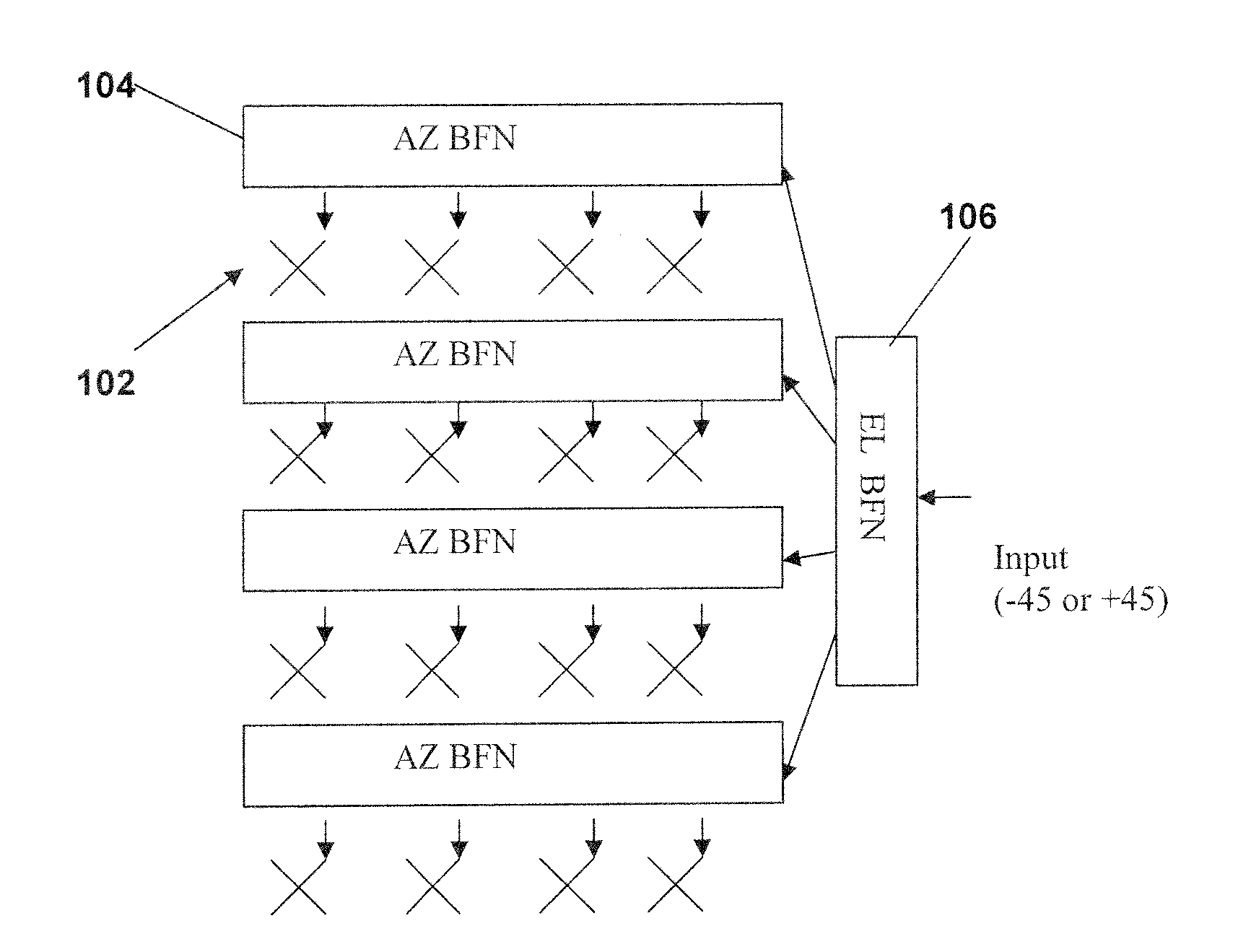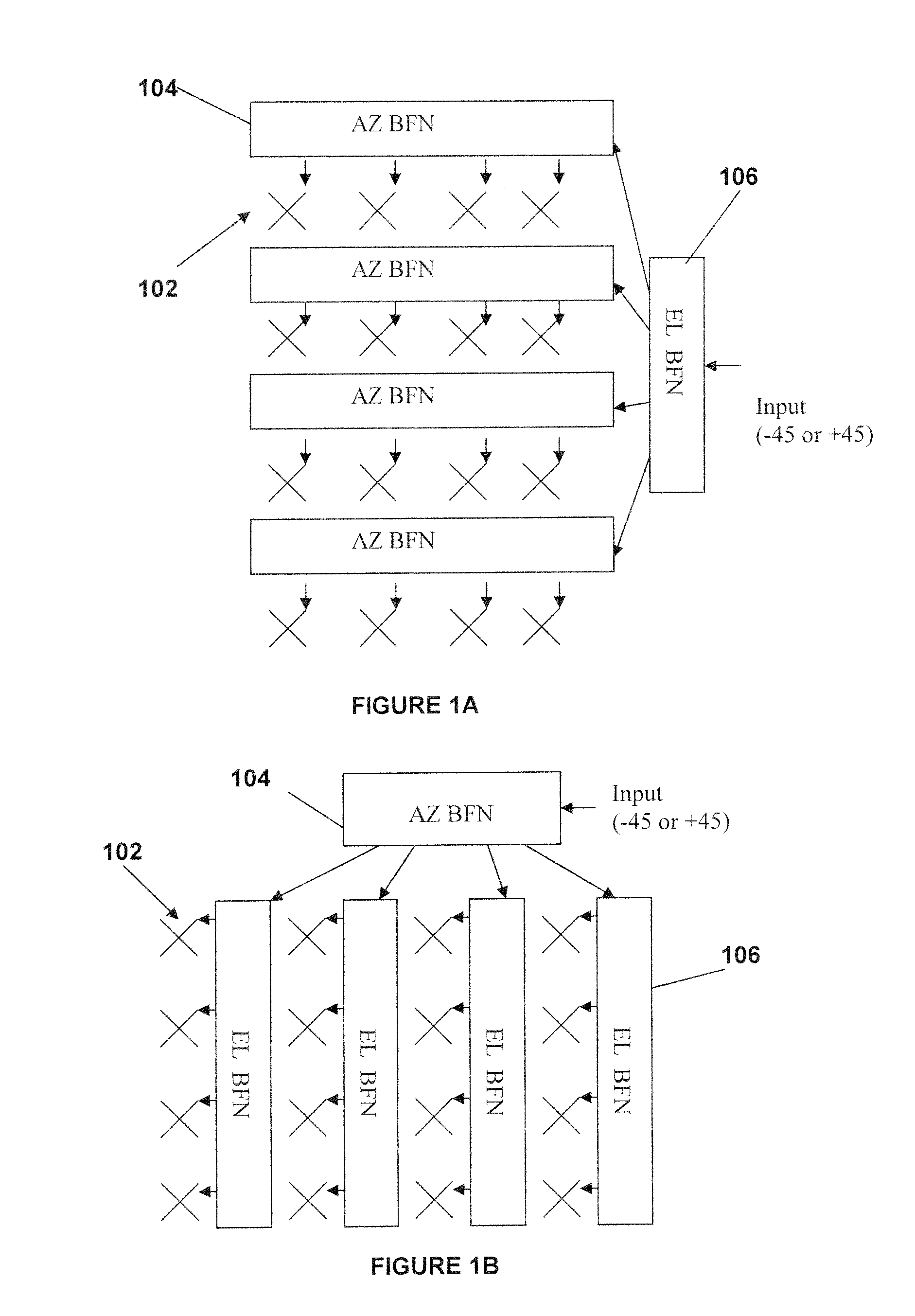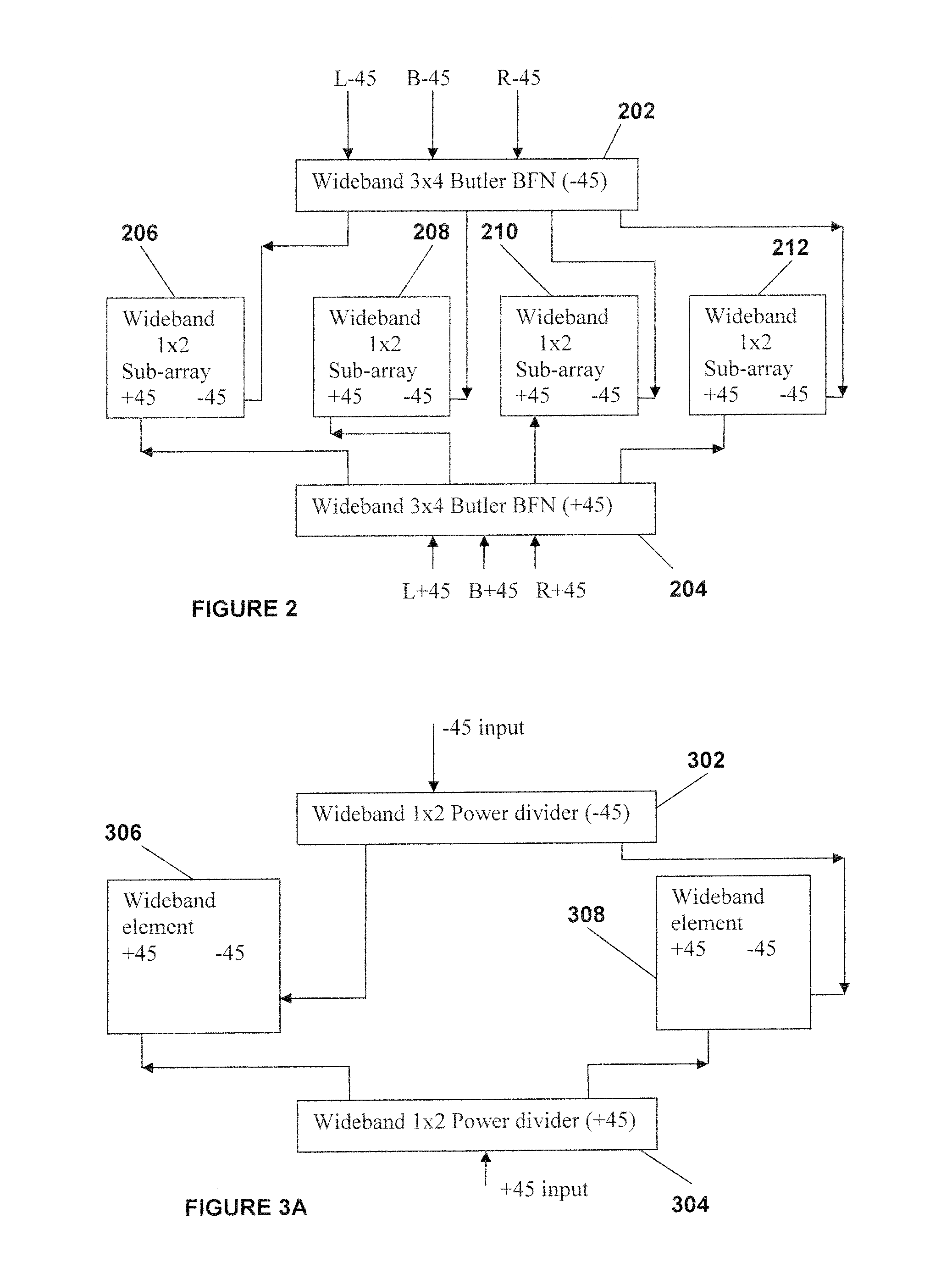Low profile wideband multibeam integrated dual polarization antenna array with compensated mutual coupling
a dual-polarization, low-profile technology, applied in the direction of antennas, specific program execution arrangements, program control, etc., can solve the problems of affecting the overall performance of the antenna array, techniques that do not work well, etc., to reduce mutual coupling, reduce mutual coupling, and improve the return loss of elements
- Summary
- Abstract
- Description
- Claims
- Application Information
AI Technical Summary
Benefits of technology
Problems solved by technology
Method used
Image
Examples
Embodiment Construction
[0025]FIGS. 1A and 1B are example architectures of a planar array with M rows and N columns consisting of three main parts: the antenna elements 102, azimuth beam forming networks (AZ BFN) 104, and an elevation beam forming network (EL BFN) 106. There are two basic structures as shown. FIG. 1A is an example of the planar array (M=4 Rows and N=4 columns) with AZ BFN 104 located between the antenna elements and EL BFN 106, and FIG. 1B is an example of the planar array (M=4 Row and N=4 column) with EL BFN 106 located between the antenna elements and AZ BFN 104. For some arrays with simple functions such as single beam or fixed tilted arrays, the BFN may be as simple as a T-splitter network. For other arrays with more complex functions such as multibeam or variable tilted arrays, the BFN may be a Butler Matrix or a phase shifter. The corresponding architecture is determined based on the functions of the required planar array. In some embodiments, FIG. 1A is used for a variable-tilted ar...
PUM
 Login to View More
Login to View More Abstract
Description
Claims
Application Information
 Login to View More
Login to View More - R&D
- Intellectual Property
- Life Sciences
- Materials
- Tech Scout
- Unparalleled Data Quality
- Higher Quality Content
- 60% Fewer Hallucinations
Browse by: Latest US Patents, China's latest patents, Technical Efficacy Thesaurus, Application Domain, Technology Topic, Popular Technical Reports.
© 2025 PatSnap. All rights reserved.Legal|Privacy policy|Modern Slavery Act Transparency Statement|Sitemap|About US| Contact US: help@patsnap.com



